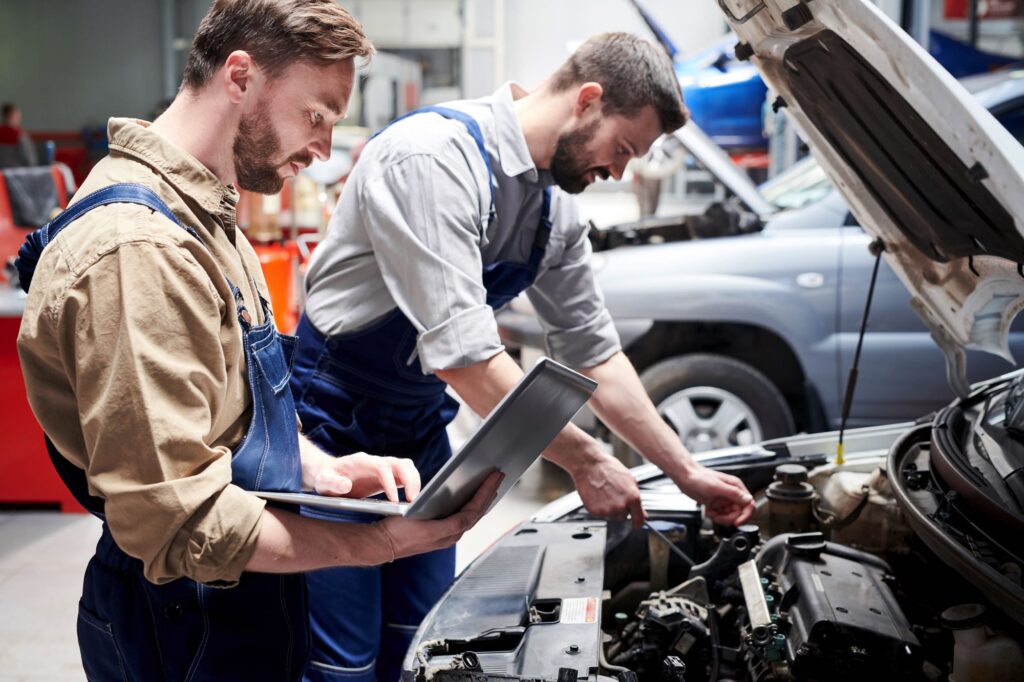As the tyres are the only contact between your vehicle and road so it is necessary to have a specific and high quality tyres. For this purpose, online tyres UAE offer a number of quality of tyres that fulfill your needs. Your car is likely one of your most significant investments. Like any valuable asset, it requires proper care and maintenance to ensure it functions optimally, lasts longer, and retains its value. Neglecting regular car maintenance can lead to costly repairs, safety hazards, and a diminished driving experience. This article will delve into the critical importance of regular car maintenance and how it benefits every vehicle owner.
The Importance of Regular Car Maintenance of tyres online Abu Dhabi
1. Enhanced Safety:
- Brakes: Faulty brakes are a leading cause of accidents. Regular brake inspections and replacements ensure optimal stopping power, keeping you and others safe on the road.
- Steering and Suspension: A well-maintained steering and suspension system provides better control and stability, especially during sudden maneuvers or in adverse weather conditions.
- Tires: Properly inflated and aligned tires improve handling, reduce the risk of blowouts, and enhance fuel efficiency. Worn-out tires significantly increase stopping distances and compromise safety.
- Lights: Functional headlights, taillights, and turn signals are crucial for visibility, especially during nighttime driving. Regular checks and replacements ensure you are seen by other drivers.
2. Improved Performance and Fuel Efficiency:
- Engine: Regular oil changes, filter replacements, and tune-ups keep your engine running smoothly and efficiently. This translates to better fuel economy, reduced emissions, and a more responsive driving experience.
- Air Filter: A clogged air filter restricts airflow to the engine, reducing power and increasing fuel consumption. Regular replacement ensures optimal engine performance and fuel efficiency.
- Fuel System: A clean fuel system ensures proper fuel delivery, leading to better engine performance and fuel economy.
3. Increased Longevity and Resale Value:
Regular maintenance helps identify and address minor issues before they escalate into major problems, preventing costly repairs and extending the life of your vehicle. A well-maintained car with a documented service history is more attractive to potential buyers. This can significantly increase its resale value when you decide to sell.
4. Peace of Mind:
Knowing that your car is in good working order provides peace of mind and reduces the stress associated with unexpected breakdowns or malfunctions. A well-maintained car provides a sense of confidence and security on the road, allowing you to focus on driving and enjoy the journey.
Essential Car Maintenance Tasks of online tyres UAE
- Oil Changes: Regular oil changes are crucial for engine health. Refer to your owner’s manual for the recommended oil change intervals.
- Fluid Checks: Regularly check and top off fluids such as coolant, brake fluid, power steering fluid, and windshield washer fluid.
- Tire Pressure Checks: Maintain proper tire inflation to improve fuel efficiency, reduce wear and tear, and enhance safety.
- Tire Rotations: Rotate your tires regularly to ensure even wear and tear.
- Battery Checks: Have your battery tested regularly to ensure it can start your vehicle reliably.
- Air Filter Replacement: Replace your air filter according to the manufacturer’s recommendations.
- Brake Inspections: Have your brakes inspected regularly by a qualified mechanic.
- Belts and Hoses: Inspect belts and hoses for signs of wear and tear, as they can cause serious engine problems if they fail.
- Suspension and Steering Checks: Have your suspension and steering components inspected for any signs of wear or damage.
- Regular Inspections: Schedule regular vehicle inspections by a qualified mechanic to identify and address potential problems early on.
Tips for Effective Car Maintenance
- Consult Your Owner’s Manual: Refer to your owner’s manual for specific maintenance schedules and recommendations.
- Keep a Maintenance Log: Maintain a record of all maintenance tasks performed on your vehicle. This can be helpful for future repairs and when selling your car.
- Address Issues Promptly: If you notice any unusual sounds, smells, or warning lights, address the issue promptly to prevent further damage.
- Choose a Reputable Mechanic from tyres online Abu dhabi: Find a trusted and qualified mechanic for all your car maintenance needs.
- Consider a Maintenance Plan: Some dealerships and service providers offer maintenance plans that can help you budget for routine maintenance costs and tyre prices.
Conclusion
Regular car maintenance is not just about keeping your vehicle running smoothly; it’s about protecting your investment, ensuring your safety, and enhancing your overall driving experience. By following the guidelines outlined in this article and prioritizing regular maintenance, you can extend the life of your vehicle, reduce the risk of costly repairs, and enjoy the peace of mind that comes with driving a well-maintained car. Remember, investing in regular car maintenance is an investment in your safety, your wallet, and the longevity of your vehicle.


